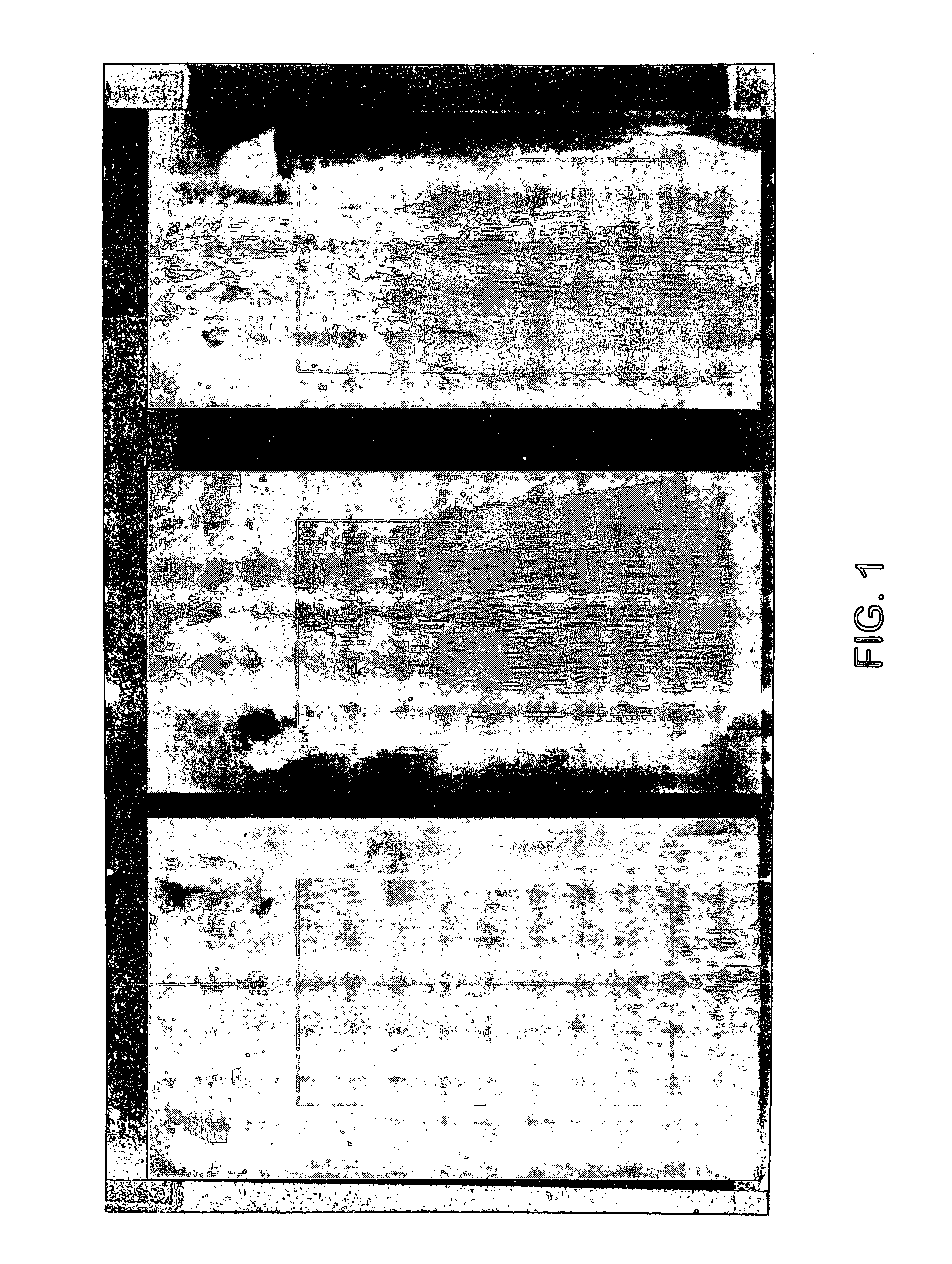Polyamines and analogs for protecting cells during cancer chemotherapy and radiotherapy
a technology of polyamines and analogs, applied in the field of cancer therapy, can solve the problems of not fully exploiting the potential utility of chemotherapeutic drugs and radiation therapy in the treatment of cancer, alkylating agents that interfere with the proliferation of cancerous cells, and non-alkylating cancer chemotherapy drugs that are toxic to mammalian cells, so as to remove flexibility in the modified area
- Summary
- Abstract
- Description
- Claims
- Application Information
AI Technical Summary
Benefits of technology
Problems solved by technology
Method used
Image
Examples
example 1
Prevention of Chemotherapy-Induced Alopecia by Topical Application of Polyamine Effectors
[0164]The inventors postulated that drug-induced alopecia could be reduced or prevented by selective protection of hair follicles. Specifically, the anti-proliferative effect of polyamine effector treatment would slow the growth of the hair follicle. Moreover, the DNA binding properties of certain subsets of polyamine effectors could provide protection of cellular DNA against reactive chemotherapy and radiotherapy by-products. Consequently, the hair follicle should become less susceptible to cancer therapy and alopecia should be diminished or eliminated. In this example, it is demonstrated that topically administered polyamine effectors were effective against chemotherapy-induced alopecia in a rat model of chemotherapy-induced alopecia. This animal model mimics many of the features found in chemotherapy-induced alopecia seen in humans and is considered a clinically relevant model for testing nov...
example 2
Prevention of Radiation-Induced Dermatitis by Topical Application of Polyamine Effectors
Materials and Methods:
[0177]To determine if treatment with a polyamine effector could effectively prevent radiation-induced dermatitis, adult rats were topically treated with several different classes of polyamine effectors before and after radiation treatment. Rats were exposed to medically relevant levels of radiation that could induce clinical radiation dermatitis. Sprague Dawley rats (Harlen Spraque Dawley) at 4–6 weeks-old were anesthetized with sodium pentobarbital at 40 mg / kg body weight (Sigma, St. Louis, Mo.) prior to radiation exposure. A defined, depilated area on the backs of rats was irradiated using a Mark I, Model 30, Cs 137 irradiator (J. L. Sheppard & Associates). Briefly, the back was stripped of hair to expose the skin using a 1:1 rosin / beeswax mixture. The rest of the body was protected from radiation exposure using a lead shield. A dose response study was initially preformed ...
example 3
Radiation-Induced Mucositis Model in Hamsters
Materials and Methods:
[0181]The model for radiation-induced oral mucositis was developed for the purpose of screening and identifying effective polyamines useful for treatment. The model used in this example was derived from the oral mucositis model described by Sonis S. T. et al. (Oral Oncology 36:373–381, 2000). Male golden Syrian hamsters (70–95 gram, 35–42 days, Charles River Laboratories, Wilmington, Mass.) were used. Animals were individually numbered, housed in small groups and fed and watered ad libitum. Hamsters were anesthetized with sodium pentobarbital (80 mg / kg body weight, Sigma, St. Louis, Mo.). The left buccal cheek pouch was everted and secured. A protective lead shield covered the remainder of the animal. Subsequently, the cheek pouch was irradiated with a single dose of radiation from 10 to 50 Gy delivered to the targeted mucosa in the 137 Cs Irradiator. Starting 10 to 12 days after radiation, the severity of mucositis ...
PUM
| Property | Measurement | Unit |
|---|---|---|
| thick | aaaaa | aaaaa |
| body weight | aaaaa | aaaaa |
| body weight | aaaaa | aaaaa |
Abstract
Description
Claims
Application Information
 Login to View More
Login to View More - R&D
- Intellectual Property
- Life Sciences
- Materials
- Tech Scout
- Unparalleled Data Quality
- Higher Quality Content
- 60% Fewer Hallucinations
Browse by: Latest US Patents, China's latest patents, Technical Efficacy Thesaurus, Application Domain, Technology Topic, Popular Technical Reports.
© 2025 PatSnap. All rights reserved.Legal|Privacy policy|Modern Slavery Act Transparency Statement|Sitemap|About US| Contact US: help@patsnap.com


